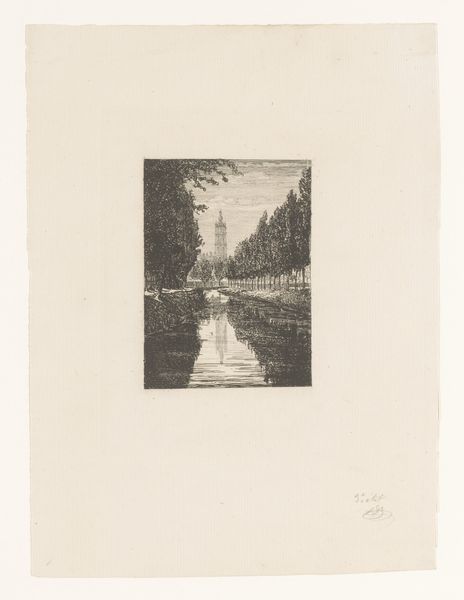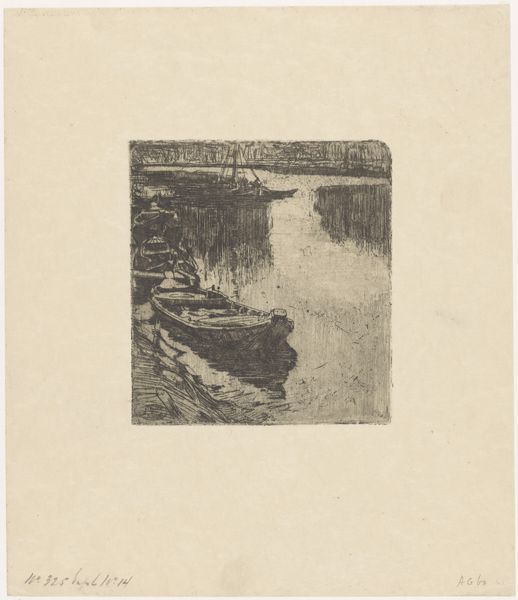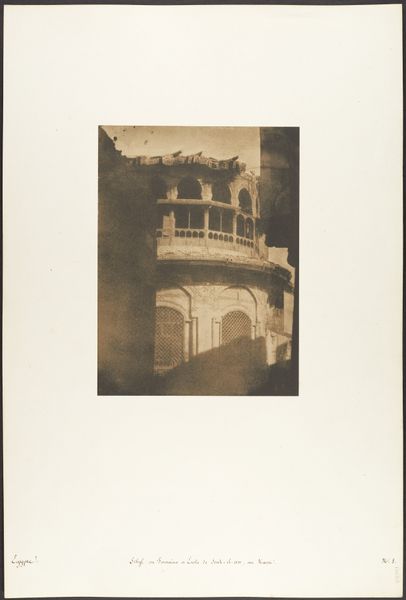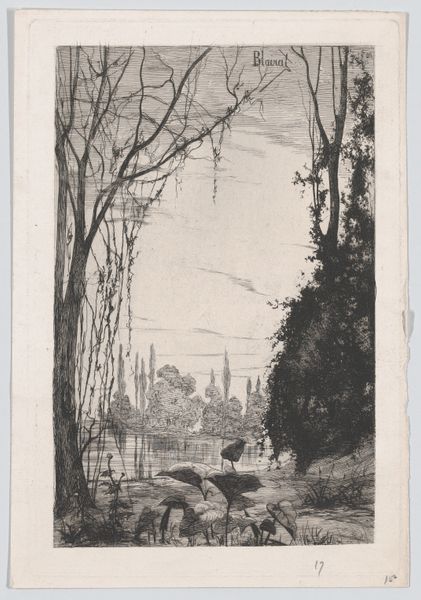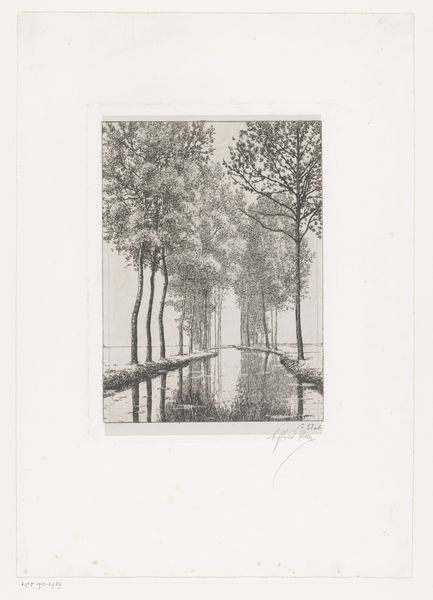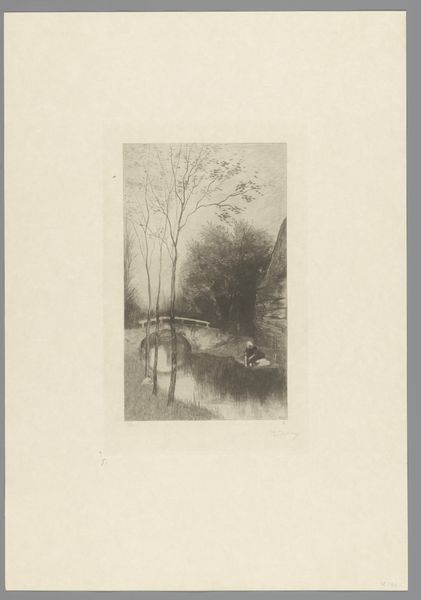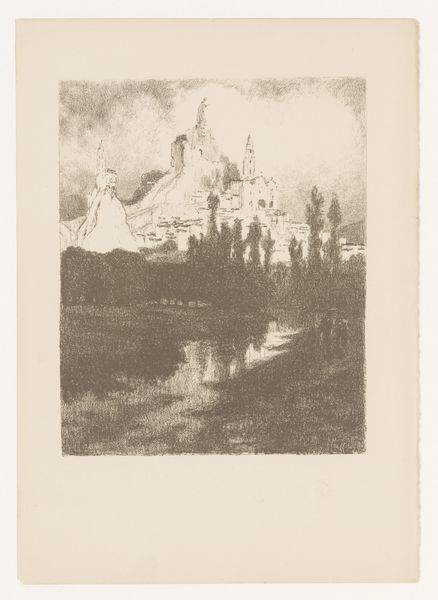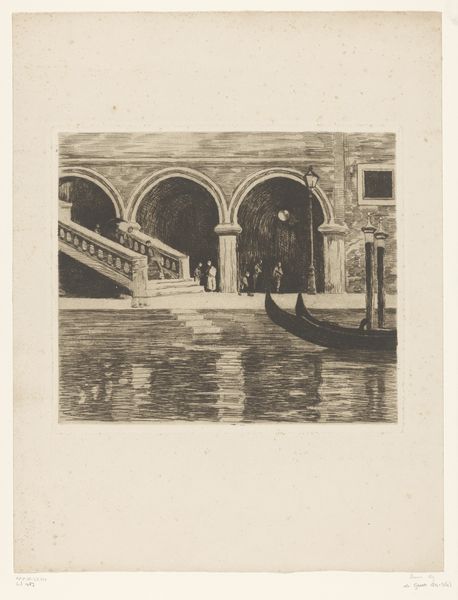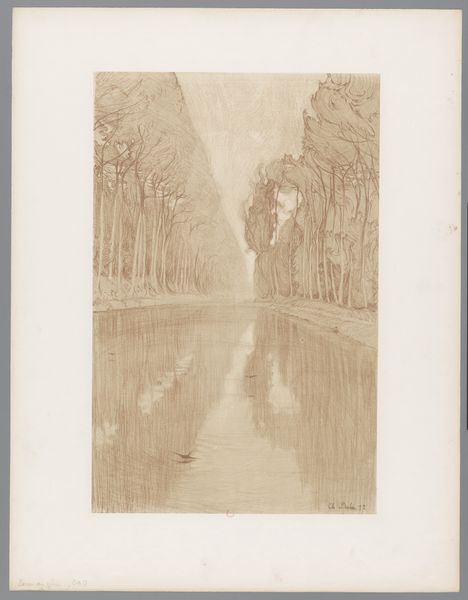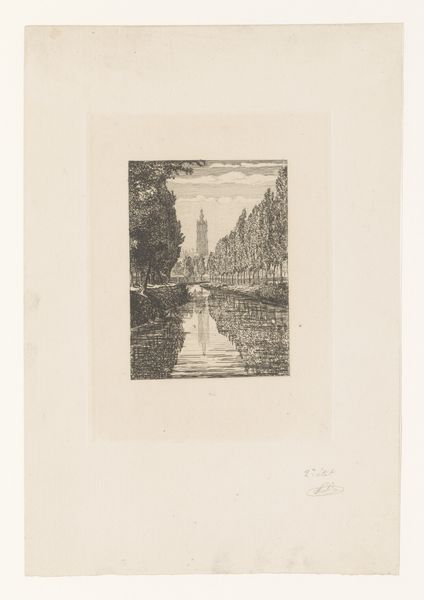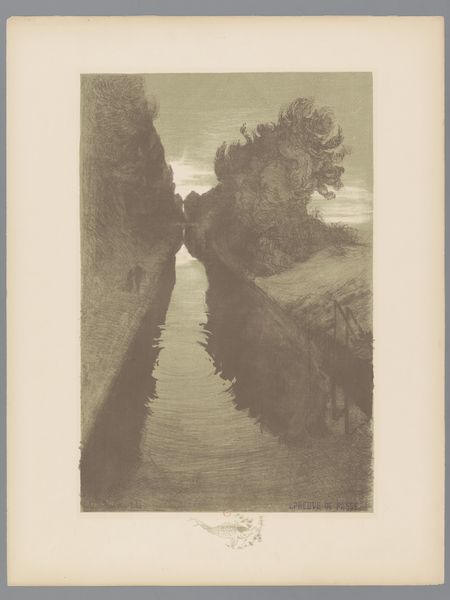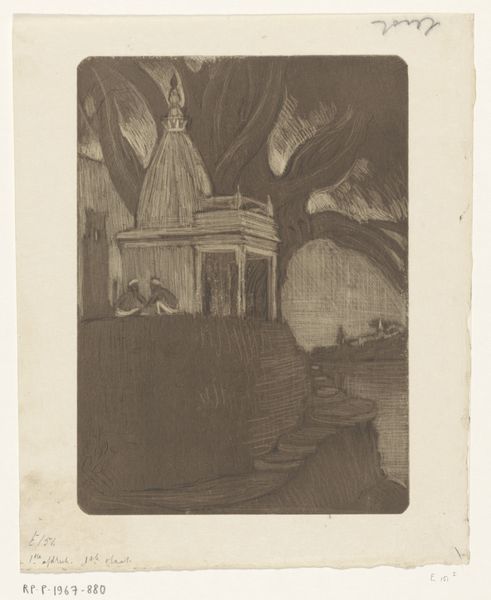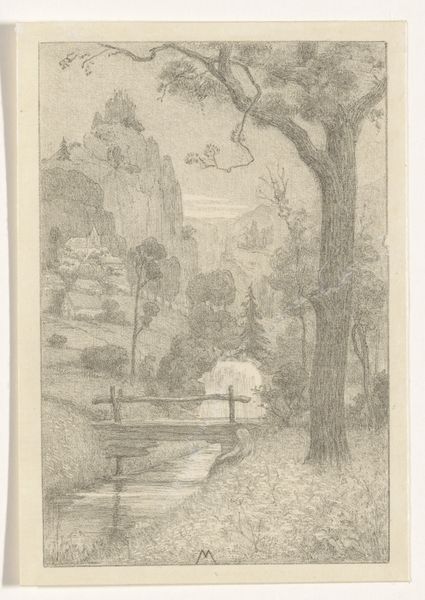
print, etching
portrait
17_20th-century
etching
landscape
realism
Copyright: Public Domain
Editor: This is "Cosima Wagner" an etching by Jacob Hilsdorf created in 1911. It's… quite striking, almost theatrical in its composition with that narrow view framed by trees reflected in water. What's your initial read of this, Professor? Curator: This print exemplifies how landscapes weren't just innocent depictions of nature; they were deeply enmeshed with power, memory, and social constructs. Do you notice the positioning of the building? It's intentionally framed. Editor: I see it—sort of like looking through a keyhole or a proscenium arch. The reflection adds to that sense of staged drama, I think. Curator: Precisely. Hilsdorf created this work at a time when Wagner's legacy was already monumental, almost a cult. By associating Cosima Wagner, Richard Wagner's widow, with such a grand architectural setting, he subtly reinforces that connection to power and artistic authority. Think about the social and artistic circles of that period - who was building and collecting, and how were they building and collecting, and what statements were they making? Editor: So the landscape isn’t just backdrop; it's actively building up an image of the subject, both the building and, more symbolically, Cosima. Was Hilsdorf critiquing this? Curator: That’s a complex question. He's participating in the visual construction of her image, regardless. This type of representation, through architectural and natural grandeur, legitimizes Cosima's cultural position, even decades after Wagner's death. The print likely circulated within specific circles, reinforcing those established narratives of Wagnerian legacy. Consider its accessibility and intended audience - was it intended for popular consumption or elite collectors? Editor: That context makes it much more intriguing than I initially thought. Seeing it as an active participant in shaping reputation gives the work a whole new dimension. Thanks! Curator: Indeed. By considering these aspects, we can analyze the artwork as more than just an aesthetic object, and understand its contribution to socio-cultural historical narratives.
Comments
No comments
Be the first to comment and join the conversation on the ultimate creative platform.
